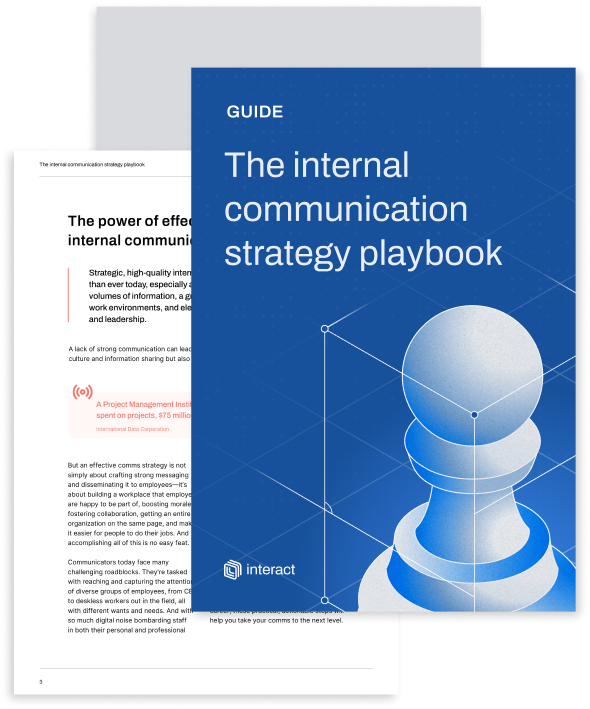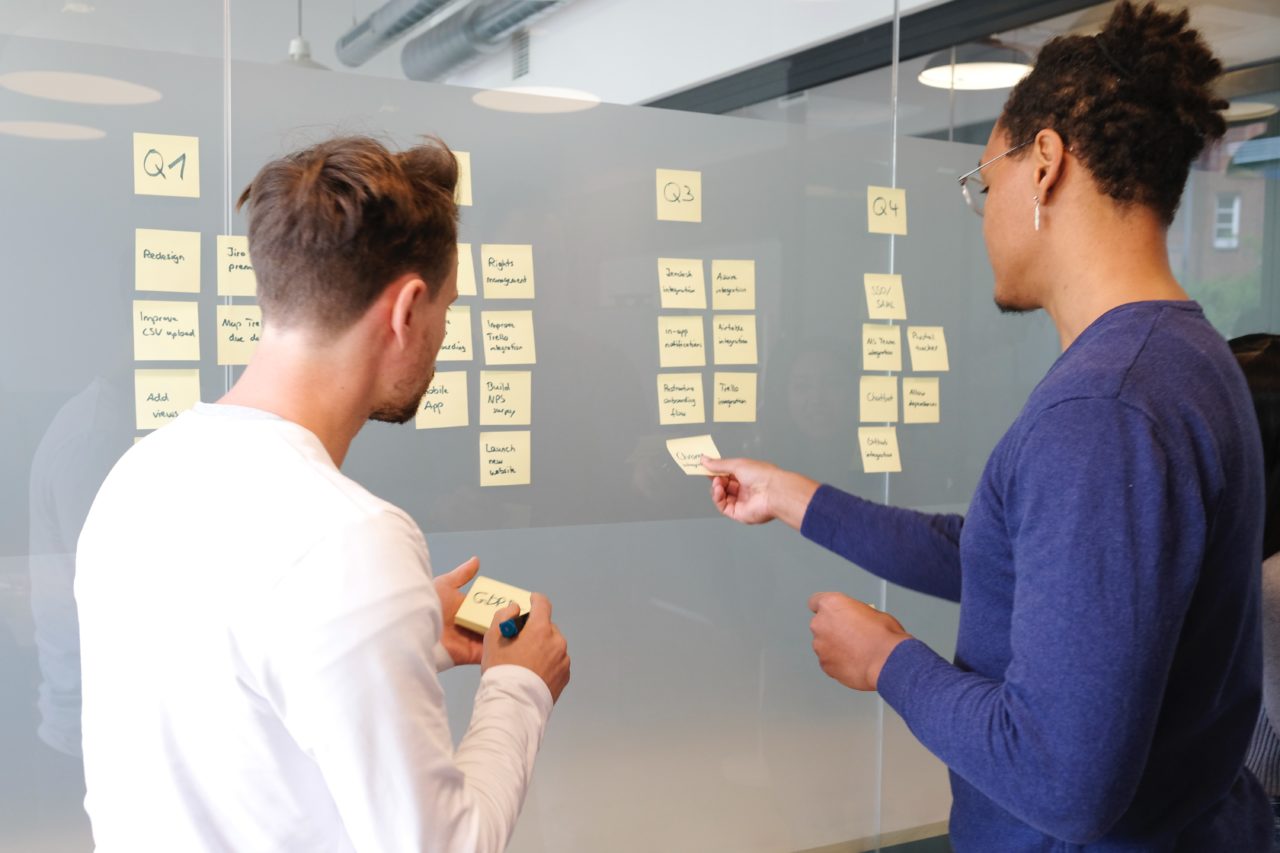Discover examples of organizations using customer and employee co-creation to encourage innovation and intrapreneurship.
Given the high-level status attached to people like Jeff Bezos and Arianna Huffington, you’d be forgiven for automatically thinking that ‘entrepreneur = rich and successful’.
The world is full of serial entrepreneurs though, many of whom fail time and again, and whose names we never hear. They work long hours and have stresses that wage-earning employees don’t face. Despite this, entrepreneurs are happier than the rest of us!
Research by academics at King’s College London found that entrepreneurs experience higher levels of happiness, meaning, and autonomy than wage-earning employees.
What they discovered was that the mental rewards from having decision-making freedom and the feeling of doing something meaningful energize people to be creative and productive.
The question for progressive businesses then is how to encourage staff to take a more entrepreneurial approach in a way that ties to your employee listening strategy or idea management processes.
Co-creation can drive employee satisfaction

As if having to deal with the pandemic wasn’t enough, since 2021 the Great Resignation has seen millions of staff leave their roles. This mass exodus has created labor shortages in many industries and forced employers into rethinking how they can create outstanding employee experiences that will attract and retain talented people.
Business thinkers such as David Weitzner argue that what is missing in the modern workplace is not more wellness tips and yoga classes but a “move away from an emphasis on ‘management’ and towards a focus on co-creation.”
The essential guide to internal communications
The research mentioned earlier shows that entrepreneurs are happier because they have decision-making freedom and meaningfulness in their work. If employers want workers to be happier and stay for the long-term then, empowering them to feel autonomous and involved in the process of co-creating solutions with employers may help.
Innovation – and enabling workers to contribute to the direction of an organization – is also especially important for younger staff. Millennials, Deloitte outlined in its Millennial Survey, want to work in places where they feel empowered and accountable.
As Weitzner points out, co-creation could be the key to getting everyone feeling entrepreneurial.
What is co-creation and how does it encourage innovation?

Co-creation is typically thought of as a process in which the design of new products or services has direct input from customers. Consumers may submit ideas or designs, which the firm then develops and takes to market. Although the company benefits most, consumers also feel that something they wanted has been delivered and their relationship to the brand is often strengthened by the process of being listened to. In many cases, the originators receive financial reimbursement too.
This activity also takes place within companies, with employee ideas and feedback taking the place of consumers. Many organizations, especially large enterprises, have a great pool of creative ideas but they often do not progress past the idea stage because there are insufficient feedback and ideation structures to encourage development.
Where these processes do exist though, we think of them as intrapreneurship, or employee-led innovation. The responsibility for generating such an approach may be the responsibility of a Chief Strategy or Transformation Officer, but changing a business’ culture to be more intrapreneurial may also fall partly to HR and communications teams because they help to structure feedback loops with employees.
If this work does fall within your remit, when considering how you might achieve this, start by looking at some of our favorite examples of corporate intrapreneurship that have generated ideas from employees.
Successful examples of companies using employee co-creation

1. The McDonald’s happy meal
A staple at McDonald’s for decades, the company owes the success of the Happy Meal to an employee. The exact origins of the Happy Meal are complex (several people came up with similar ideas around the same time), but the most reliable origin story comes from Guatemala.
Jose Maria Cofino co-founded the first McDonald’s in Guatemala in 1974. In 1977, she also created a “Ronald’s Menu” containing a hamburger, small fries, small Coke, and ice cream. Yolanda also added toys and packaged the menu without a box. Rather than asking HQ in the US for permission, Yolanda took an entrepreneurial approach, later presenting the idea at a McDonald’s marketing conference in Chicago.
While the story here is about the power of acting based on local market realities, it’s crucial to note that the idea only became a success because the company listened at a conference and implemented the idea more widely.
The essential guide to internal communications
2. Amazon Prime
From one paradigm-shifting business idea to another. In 2004, Amazon was successful but had not yet achieved global dominance. In February 2005, however, Amazon unveiled Amazon Prime (a subscription service that offers customers free shipping and one-day delivery, later expanded to video streaming and other services) and everything changed. Today, Amazon Prime has over 200 million annual subscribers.
According to former VP at Amazon, Greg Greeley, the idea of Prime emerged because of the company’s focus on developing an intrapreneurial culture. Greeley has said:
We really wanted everyone to be thinking about new ideas that would benefit our customers. No one in the leadership team thought that there was a monopoly on good ideas, that they can only come from a certain group. […] I myself had a regular meeting block held on my calendar. Basically, a fixed time anyone in my organization could come suggest or pitch me on a new product idea or a better way to serve our customers.
The lesson? Have leaders who encourage innovation and actively make time to listen to new ideas from everywhere.
3. Ford’s on-the-go H2O
The Ford Motor Company is based on the innovations of its namesake, but when other car manufacturers started to file more new patents than Ford the company realized that it needed to prioritize internal inventors.
To boost intrapreneurship, the company created internal initiatives such as financial incentives for inventors and company-wide innovation challenges. Within a few years, the tactic worked, with Ford filing more new patents than ever. Between 2015 and 2016, more than 4,000 first-time inventors submitted ideas.
One notable idea came from Doug Martin, a Ford powertrain controls engineer who proposed a filter that converts moisture in the air into drinking water for the local community. By raising the profile of employee idea gathering and co-creation, the company has created new products and boosted innovation.

4. Unilever invites innovation
Unilever is one of the world’s largest FMCG companies. It owns more than 400 brands, including Ben & Jerry’s and Lifebuoy.
Unilever also has operations in 190 countries, so it has a vast base of consumers and employees to draw ideas and inspiration from.
To drive innovation using consumer insights, Unilever has an Open Innovation platform. From this public webpage, the company presents specific challenges and encourages individuals to submit ideas about themes such as intelligent product packaging and nutritional food. If a suggestion is successful, the submitter can be offered a commercial contract for their solution, as well as professional recognition.
Unilever also promotes innovation from within through its Flex Experiences platform, a piece of workplace software that enables 65,000 global employees to share their skills and experience with other teams and in other countries. The internal talent marketplace engages workers by using AI to find projects they might want to work on and enabled the redeployment of over 3,000 people to areas of the business that saw high demand due to the pandemic. This talent flexibility also allows greater collaboration and the generation of new ideas by better mixing talented staff.
The essential guide to internal communications
5. Xerox goes green
When Xerox decided it wanted to embrace better sustainability practices, it asked employees for their ideas. Xerox encouraged green innovation through the creation of an ‘Earth Awards’ program that challenged staff to dream up innovative solutions.
Employees from across the company entered their bright ideas into the competition, with entries ranging from reducing packaging to handling wastewater more efficiently. Not only did they get the chance to see their ideas put into action on a grand scale, but the company benefitted too. In one year alone, the new ideas helped Xerox to save $10.2 million and eliminate 2.6 million pounds of waste.
6. Sodexo’s Innov’Hub
With over 400,000 employees, Sodexo is a world leader in food and facilities management. In 2016, Sodexo launched the innovation platform Innov’Hub, to support its army of employees with collaboration and co-creation in the workplace.
Sodexo’s intrapreneurship platform grows the collective power of workers to promote innovation by giving them a digital space where employees can ideate, crowdsource, and share their ideas. By empowering employees with visibility and a structured framework, Sodexo puts employee ideas at the center of the business.

How you can promote co-creation and intrapreneurship
The examples above show that intrapreneurial co-creation doesn’t have a single route to success. Ideas derive from team-centric pressure cooker sessions, phone calls to receptive CEOs, or inventive employees who understand local markets.
Despite the variances in the stories though, the most successful examples of modern employee co-creation rely on a few common factors.
- Structured online platforms – As enterprises have grow to span multiple countries, languages, and time zones, software platforms that facilitate employee idea sharing and internal communication have also gained momentum. These platforms vary from crowdsourcing programs to intranet software. The advantage of using your intranet for this process, however, is that all employees have access (via web, responsive, and mobile app), anyone can begin conversations via blogs, forums, discussions, and everything can be translated into multiple languages automatically.
- Personal connections – When people are accessible and visible throughout an organization, it’s easier to connect and make suggestions. To help employees get to know each other, fully completed intranet user profiles can cover everything from basic information to more in-depth info on expertise, interests, and ideas. To make these profiles extra powerful, give users the ability to find colleagues they don’t know through an enterprise search tool that indexes user profiles too.
- Enabling feedback – Co-creation relies on regularly asking employees for their feedback. This can take place across many business interactions but a key one is simple pulse surveys which allow you to reduce lengthy engagement surveys to single questions. Pulse surveys can be placed on intranet landing pages, so visiting employees are encouraged to give their high-level thoughts in a simple, prominent way. Whether the process produces the next Amazon Prime or not, it can increase the visibility of co-creation initiatives and further supplement intrapreneurship.
It’s easy to assume that organizational change only comes from senior leadership or external consultants. When this happens though, employees can feel disengaged from the process and disinclined to participate fully with their employer.
We know that workers have valuable insights into where an organization isn’t fully delivering for customers and how its products or services can be improved. We know too that there are tools and processes for setting up an intrapreneurial culture that allows staff to champion new ideas. If you’re seeking a new source of innovation, bringing these elements together may be a good place to begin.


